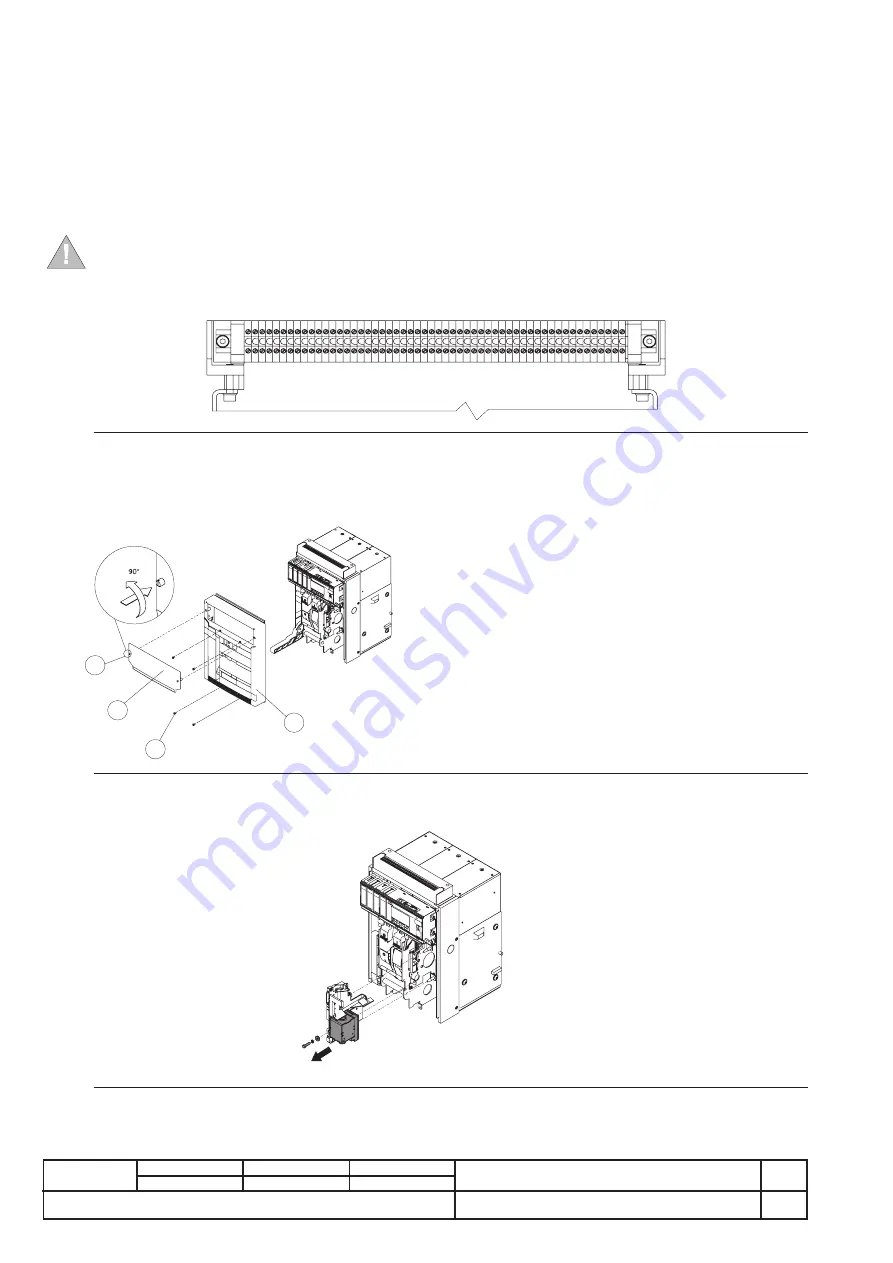
B2342
Emax VF
20/66
Doc. no.
Model
Apparatus
Scale
Page No
1SDH000909R0001
- For excessive deposits, a dilutant such as Henkel 273471 or the equivalent can be used.
- Check that the rating plates of the apparatus are in place.
- Clean the rating plates with dry and clean cloths.
- Eliminate any dust, mould, traces of condensation or oxidation also inside the fixed part if the circuit-breaker is a withdrawable version.
- Check that there are no foreign bodies in the circuit-breaker cabinet.
8.3.3. Circuit-breaker connections and connections between the circuit-breaker and the control panel
- Use brushes and dry cloths to remove any dust or dirt (if necessary, use non-corrosive detergent.)
- For excessive deposits, a dilutant such as Henkel 273471 or the equivalent can be used.
- Check that there are no traces of overheating on the terminals. This problem is due to discolouring of the contact parts; the contact
parts are normally silver in colour.
- Check that the bolts fixing the connections to the terminals are tight (M12 - 70Nm).
WARNING: before working on fixed circuit-breakers or on fixed part, disconnect the supply to the power circuit
and to the auxiliary circuits and earth the terminals in a visible manner both on the supply and on the load side.
- Check that the connecting screws of the cables of the terminal boards are tight (0.7 Nm).
Fig. 32
8.3.4. Dismantling tab and cap
- The tab (1) of the release by rotating the screws (2) as shown in figure 33.
- Remove the front cap (3) by loosening the four screws (4).
1
2
3
4
SAC
E PR
122/V
F
Fig. 33
- If there is an undervoltage release, remove the coils support and release the control springs, closing and opening the circuit-breaker.
SAC
E PR
122/V
F
Fig. 34
















































